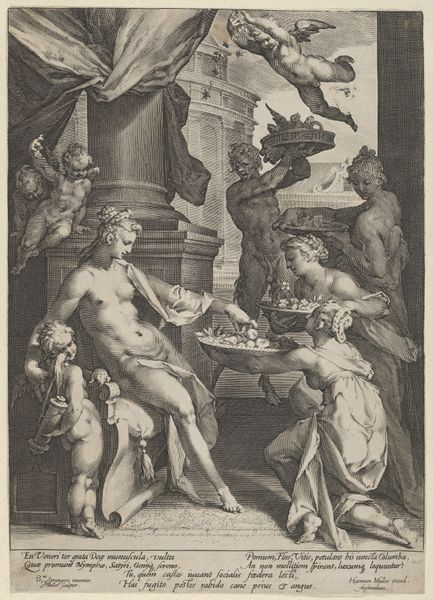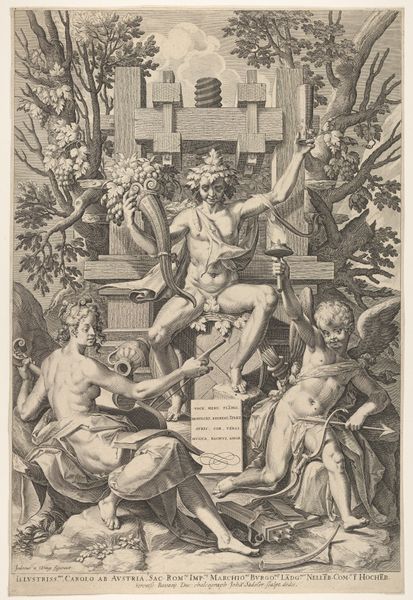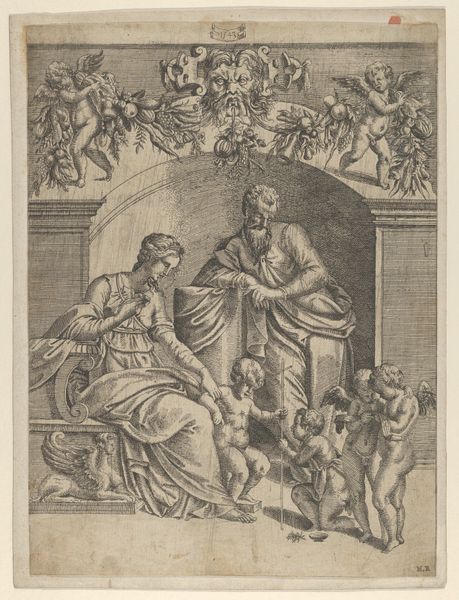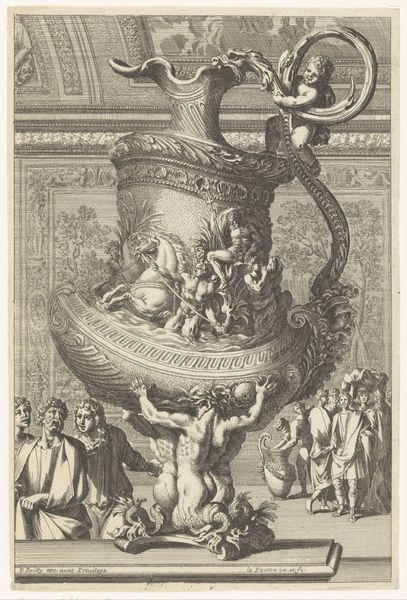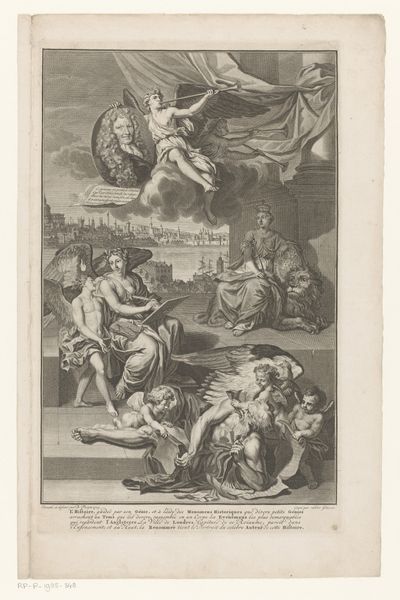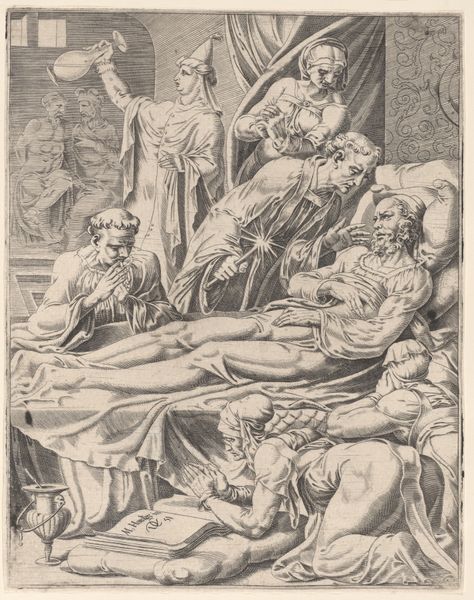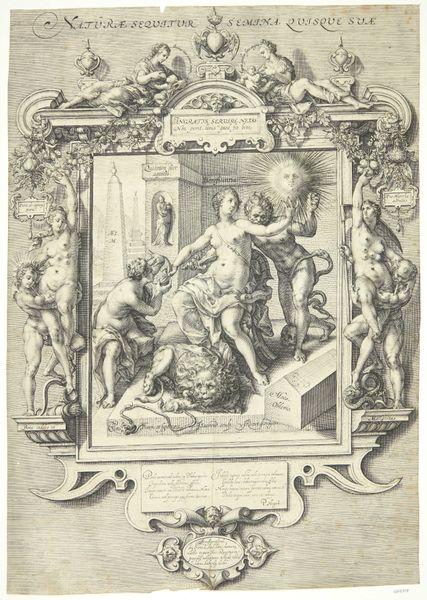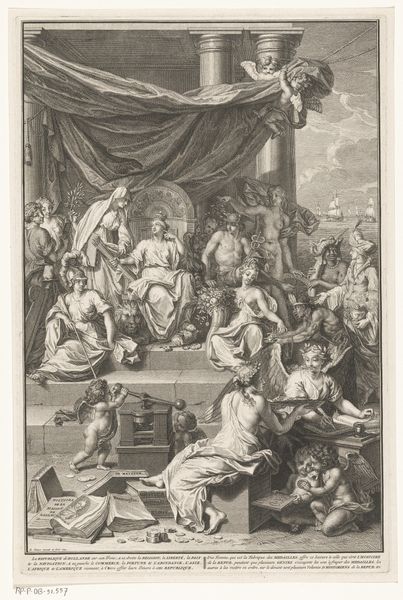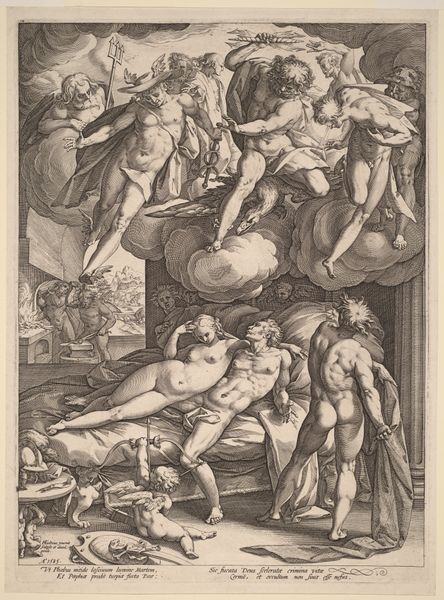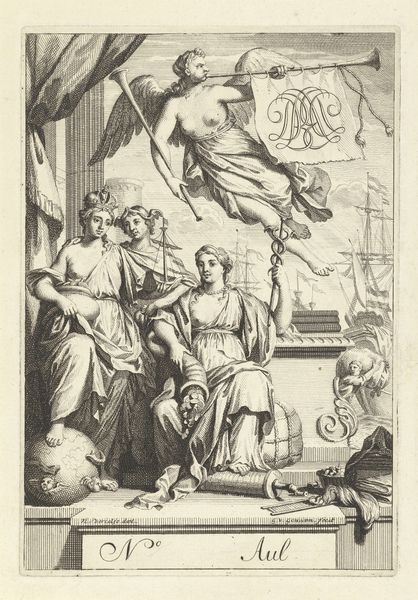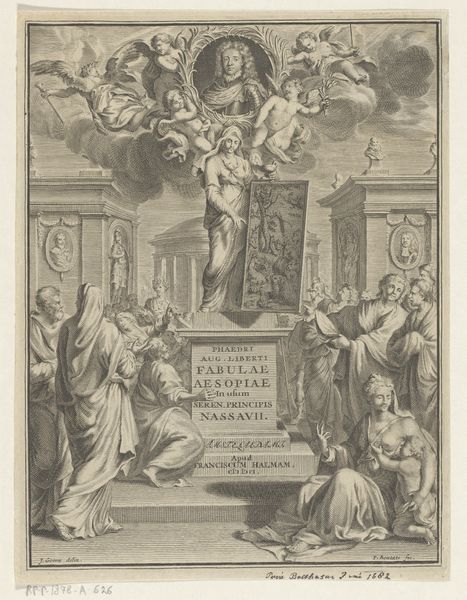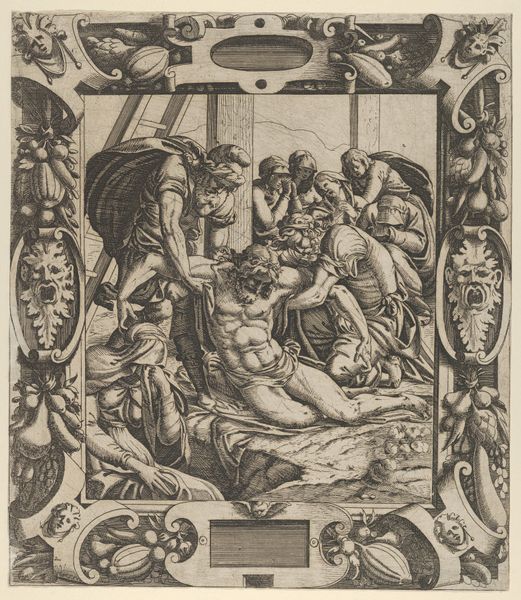
Abundantia hält das Medaillon eines mit Lorbeer gekrönten Mannes, oben schwebt ein Faun 1712
0:00
0:00
drawing, print, paper, ink, graphite, engraving
#
portrait
#
drawing
#
netherlandish
#
allegory
#
baroque
# print
#
paper
#
ink
#
pencil drawing
#
15_18th-century
#
graphite
#
history-painting
#
engraving
Copyright: Public Domain
Editor: This intricate drawing from 1712, titled "Abundantia hält das Medaillon eines mit Lorbeer gekrönten Mannes, oben schwebt ein Faun," by Bernard Picart, features ink, graphite, and engraving on paper. It almost looks like a political cartoon, very symbolic! How should we read something like this? Curator: It's fascinating to consider how prints like this circulated and shaped public opinion in the 18th century. Look at the central medallion—who do you think that’s a portrait of? Editor: The laurel wreath makes me think of royalty or someone celebrated. And there’s a lot going on around him… figures seemingly offering gifts. So a leader of some sort, right? Curator: Indeed. This print isn't just a portrait; it’s a carefully constructed piece of propaganda. The figure of Abundantia, or abundance, presents the medallion, while the faun suggests a connection to nature and prosperity. The city depicted suggests the figure being celebrated contributed significantly to the city iteself. Editor: So it's celebrating wealth, success and probably trying to generate support for a political figure. It’s interesting that it uses both classical and allegorical figures. Is that typical? Curator: Absolutely. The Baroque period often saw the blending of classical motifs with contemporary political messaging. The very act of printing and distributing such images aimed to shape public perception. Consider where these would have been displayed – perhaps in coffee houses or public buildings, sparking conversation and solidifying a certain narrative. Editor: It feels so different from how political messages are conveyed now, yet the goal is fundamentally the same. I definitely see it now as a form of visual rhetoric designed for a specific social and political environment. Curator: Exactly. Analyzing the visual language and historical context unlocks the deeper meaning and purpose behind these seemingly straightforward images. I'm glad you have new appreciation for Picart's detailed choices within a specific political era!
Comments
No comments
Be the first to comment and join the conversation on the ultimate creative platform.
